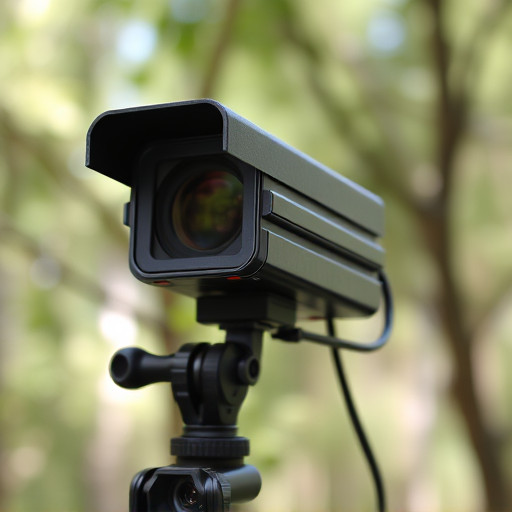Installing multiple fake security cameras disguised as everyday objects like smoke detectors or light bulbs is a growing trend in home security, offering discreet monitoring via smartphone apps and deterring intruders. Strategically placed decoy cameras provide cost-effective protection against burglaries, especially in crime-prone areas or vacant homes, while maintaining an aesthetically pleasing environment. However, integrating these devices raises legal and privacy concerns, necessitating adapted regulations to balance security with personal freedom.
“Unveiling the future of home security, this article explores miniature surveillance devices disguised as everyday objects. From smart home devices to innocuous-looking items, these tiny cameras offer an innovative way to protect your space.
Discover the advantages of installing multiple fake security cameras for enhanced peace of mind. Learn about discreet placement ideas, transforming common household objects into vigilant sentinels.
However, navigate legal considerations and privacy concerns as we delve into this evolving technology, ensuring an informed approach to leveraging miniature surveillance devices.”
- Understanding Miniature Surveillance Devices
- Advantages of Installing Fake Security Cameras
- Discreet Placement Ideas for Home Objects
- Legal Considerations and Privacy Concerns
Understanding Miniature Surveillance Devices
Miniature surveillance devices, often disguised as everyday objects, are a growing trend in home security. These tiny cameras, hidden within seemingly innocuous items like smoke detectors, light bulbs, or even potted plants, offer an innovative way to monitor your home’s activities. By installing multiple fake security cameras around the house, homeowners can create a false sense of security, deterring potential intruders while gaining peace of mind.
This technology allows for discreet surveillance, providing live feeds and recorded footage accessible through a smartphone app or computer. With their small size and unassuming appearance, these devices can be strategically placed to cover various entry points and common areas, making them an effective tool against burglaries and other illegal activities.
Advantages of Installing Fake Security Cameras
Installing fake security cameras, also known as decoy or dummy cameras, offers a range of advantages for homeowners seeking to enhance their home security. One of the primary benefits is their ability to deter potential intruders. By strategically placing these realistic-looking devices in visible areas, residents can create the illusion of a well-monitored property, discouraging break-ins and theft. This is especially useful in neighborhoods with a history of crime or for homes left unattended for extended periods.
Additionally, fake security cameras provide a cost-effective solution compared to installing multiple real surveillance cameras. Homeowners can choose from a variety of designs and styles, making it easy to match them with existing decor. Installing multiple dummy cameras across different locations in the home creates an even more convincing security system, further intimidating would-be thieves. This simple yet effective measure can give homeowners peace of mind, knowing their property is better protected without the need for costly and complex surveillance setups.
Discreet Placement Ideas for Home Objects
When integrating miniature surveillance devices into home objects, discreet placement is key to maintaining an unintrusive and aesthetically pleasing environment. One effective strategy is to install multiple fake security cameras around your space. These decoy cameras mimic genuine security equipment while serving as a psychological deterrent for potential intruders. Place them in strategic locations like window sills, doorframes, or even on top of bookshelves to create the illusion of comprehensive surveillance.
Complement this approach by utilizing everyday objects as hidden camera placements. For example, a stylish decorative vase or a unique art piece could house a surveillance device while blending seamlessly with your interior design. Similarly, smartly positioned mirrors can serve double duty, reflecting not only light but also providing covert monitoring. This creative use of common home elements ensures that your surveillance system remains hidden yet highly effective.
Legal Considerations and Privacy Concerns
The integration of miniature surveillance devices into everyday home objects raises significant legal considerations and privacy concerns. As technology advances, it becomes increasingly feasible to hide cameras in seemingly innocuous items like picture frames, smoke detectors, or even kitchen appliances. While this can offer enhanced security for homeowners, it also blurs the lines between public and private spaces.
Installing multiple fake security cameras, for instance, could lead to misunderstandings about actual surveillance capabilities, potentially infringing on the privacy of neighbors, visitors, or even unsuspecting family members. Legal frameworks must adapt to address these novel challenges, balancing the benefits of advanced home security with the right to privacy. Regulations surrounding the placement and use of such devices are crucial to ensuring that innovative technology does not come at the expense of personal freedom and safety.
Miniature surveillance devices, cleverly integrated into everyday home objects, offer a unique approach to security. While the idea of hidden cameras might raise privacy concerns, strategically placing fake security cameras can significantly enhance home safety without compromising discretion. By utilizing these innovative devices and installing multiple fake security cameras in various discreet locations, homeowners can enjoy peace of mind, deter potential intruders, and ensure their loved ones’ well-being. Remember to stay informed about local laws regarding surveillance to maintain a harmonious balance between security and privacy.
